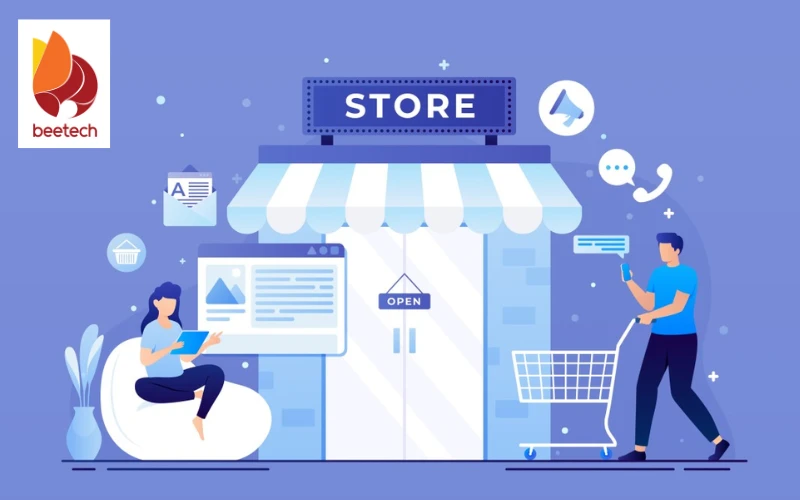Evaluating the custom e-commerce software development process
Launching an online store is easier than ever, but using a one-size-fits-all platform can limit your business’s growth. That’s why many companies choose custom e-commerce software development to build a website that fits their exact needs. A custom solution offers flexibility, unique features, and seamless integration with existing systems. But how does the development process work, and how can you ensure its success? Let’s explore the key steps involved and how to evaluate your custom e-commerce platform effectively.

1. Understanding the need for custom e-commerce solutions
Not all e-commerce businesses have the same needs. While off-the-shelf platforms like Shopify or WooCommerce offer convenience, they often come with limitations in customization, scalability, and long-term flexibility. This is where custom e-commerce software development becomes a game-changer. By building a tailored solution, businesses can create an online store that aligns perfectly with their brand identity, customer experience goals, and operational requirements.
One major drawback of pre-built platforms is the dependency on third-party plugins. While these plugins add functionality, they can slow down performance, introduce security risks, and create compatibility issues over time. Additionally, as a business grows, it may find that an off-the-shelf solution lacks the flexibility to support increasing traffic, complex product catalogs, or advanced integrations with backend systems.
>>> Read more: E-commerce Mobile App Development Experience
A custom e-commerce platform solves these issues by offering full control over features, design, and performance. Businesses can integrate custom payment gateways, create unique shopping experiences, and optimize for better speed and security. Moreover, a tailored solution ensures seamless integration with existing tools like CRM, inventory management, and analytics systems, helping businesses streamline operations efficiently.
However, choosing custom development requires careful consideration. It typically demands a higher initial investment and a longer development timeline compared to using ready-made solutions. Businesses should evaluate their growth potential, technical requirements, and budget before committing to a custom approach. While it may take more effort upfront, the long-term benefits-greater scalability, improved security, and a highly personalized user experience-often outweigh the initial challenges.
2. Key stages in the custom e-commerce development process
Building a custom e-commerce platform requires a structured approach to ensure efficiency, performance, and scalability. The development process typically follows three main stages: planning and requirement analysis, design and development, and testing and deployment. Each stage plays a crucial role in shaping a successful online store that meets both business and customer needs.
2.1. Planning & requirement analysis

The foundation of any successful custom e-commerce software development project lies in thorough planning. This stage involves defining the business objectives, identifying the target audience, and outlining the key features required for the platform. Understanding customer behavior, industry trends, and competitor strategies helps in making informed decisions about the website’s functionality.
One of the most critical steps in this phase is gathering requirements. Businesses must decide on essential features such as product management, payment gateways, shipping options, and security protocols. Additionally, integration with third-party services like CRM, ERP, or marketing automation tools should be considered early on. A well-documented requirement list ensures that the development team has a clear roadmap, minimizing costly changes later in the process.
2.2. Design & development
Once the requirements are defined, the next step is crafting the user experience and building the technical infrastructure. Custom e-commerce software development prioritizes intuitive UI/UX design to create a seamless shopping experience. A well-designed platform should be visually appealing, easy to navigate, and optimized for mobile devices, as a significant portion of online shoppers browse and purchase via smartphones.
On the development side, businesses must choose the right technology stack, including programming languages, frameworks, and databases. Backend development focuses on ensuring robust performance, data security, and smooth transaction processing, while frontend development enhances user interaction. Scalability is another key factor—developers must build a system that can handle growing traffic and increasing product inventories without compromising speed or stability.
2.3. Testing & deployment
Before launching a custom e-commerce software development project, rigorous testing is essential to identify and fix any bugs or performance issues. Functional testing ensures that all features - such as product searches, checkout processes, and payment integrations - work correctly. Security testing is equally important to protect customer data and prevent vulnerabilities like SQL injection or cross-site scripting attacks.
Performance testing evaluates the platform’s speed and responsiveness under different traffic loads. An e-commerce site must handle peak shopping periods without crashing or slowing down. Additionally, user acceptance testing (UAT) allows real users to provide feedback on the overall experience, helping to refine the final product before deployment.
>>> See more: What is the cost of outsourcing software services in Vietnam?
Once testing is complete, the deployment phase begins. This involves configuring the hosting environment, setting up a content delivery network (CDN) for faster load times, and ensuring all integrations work seamlessly. A well-planned launch strategy includes monitoring site performance, fixing any post-launch issues, and gathering customer feedback for continuous improvements.
By following these structured stages, businesses can ensure a smooth custom e-commerce software development process, resulting in a high-performing and scalable platform that meets both business and customer expectations.
3. Evaluating the success of the custom e-commerce software development process
Developing a custom e-commerce platform is only the beginning. To ensure long-term success, businesses must continuously evaluate its performance, usability, and scalability.

3.1. Measuring performance and usability
The first step in assessing a custom e-commerce software development project is evaluating its performance. A slow-loading website can lead to high bounce rates and lost sales, so monitoring page speed and server response times is crucial. Tools like Google PageSpeed Insights and GTmetrix help analyze performance bottlenecks, while load testing ensures the site can handle peak traffic without disruptions.
Usability is equally important. Customers expect an intuitive and seamless shopping experience, from browsing products to completing purchases. Evaluating navigation structure, mobile responsiveness, and checkout efficiency helps identify potential friction points. Heatmaps and session recordings can provide valuable insights into how users interact with the site, highlighting areas for improvement.
3.2. Gathering customer feedback and continuous improvement
A custom e-commerce software development process should evolve based on real user experiences. Collecting customer feedback through surveys, reviews, and support inquiries helps businesses understand pain points and opportunities for enhancement. Common issues, such as abandoned carts or finding products, can be addressed by refining the user interface or optimizing the checkout process.
Regular updates are necessary to keep the platform competitive. This includes adding new features, improving security measures, and optimizing performance based on emerging trends. A/B testing can help determine which design or functionality changes lead to better user engagement and conversion rates.
3.3. Ensuring scalability and future enhancements
A well-built custom e-commerce software should be scalable to accommodate business growth. As traffic increases, the platform must maintain speed and reliability. This requires optimizing database queries, leveraging caching techniques, and ensuring cloud-based infrastructure can scale on demand.
Additionally, integrating new technologies - such as AI-powered recommendations, voice search, or AR shopping experiences - can enhance the customer journey. Regular audits help identify outdated functionalities that need upgrades or replacement to keep up with industry standards.
4. Conclusion
Building a custom e-commerce platform is a strategic investment that gives businesses full control over their online presence, ensuring scalability, security, and a seamless user experience. From defining requirements to designing, developing, and optimizing performance, every stage of the custom e-commerce software development process plays a crucial role in long-term success. However, launching the platform is just the beginning - continuous evaluation, customer feedback, and technology updates are essential to staying competitive in the ever-evolving e-commerce landscape.
If you're looking to develop a tailored e-commerce solution that meets your business needs, follow BeetechSoft for expert insights, best practices, and professional development services. Let’s build a powerful and scalable online store together!
